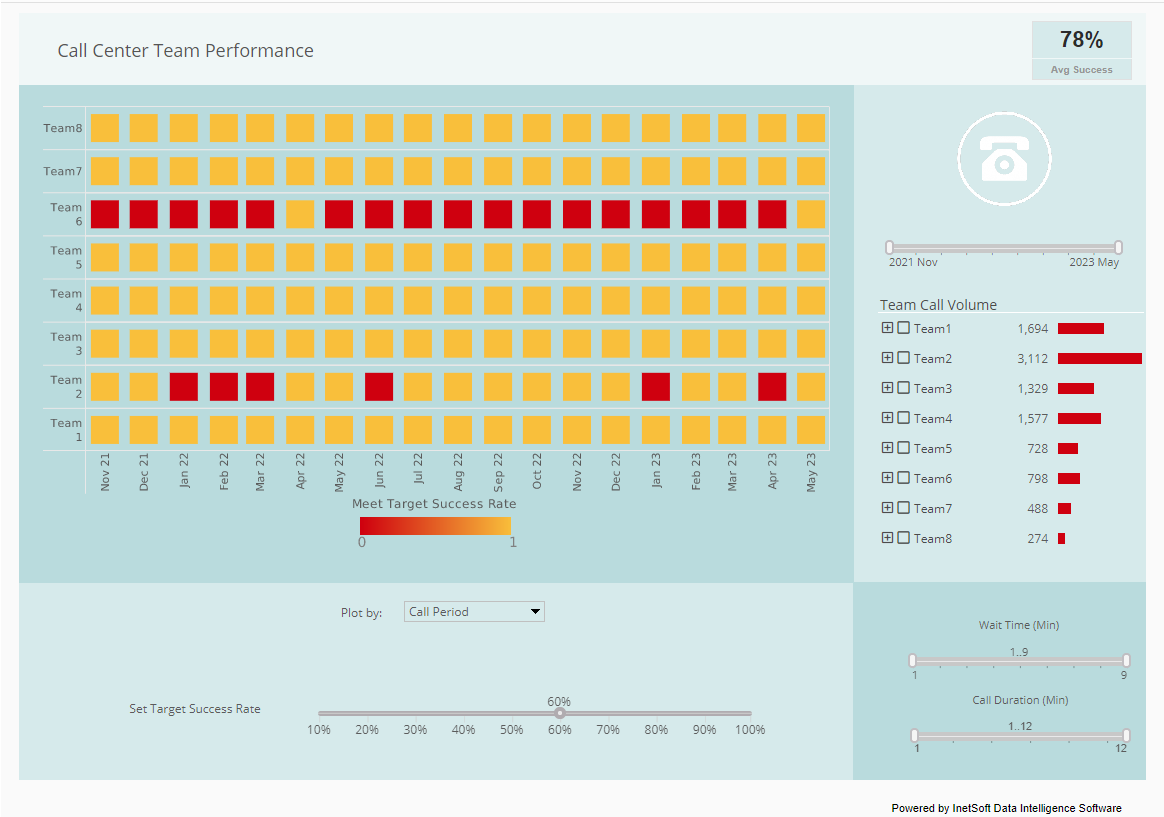How to Create an Executable Report
Replet Names
Replets are organized in a hierarchical structure in the repository. There can be any number of levels in the tree. The leaf nodes of the tree are replets and non-leaf nodes are folders. A non-leaf node can be empty, in which case it is simply an empty folder (with no reports in it).
The tree position of a replet is encoded in the replet name. A replet name is a full path from the root of the tree to the replet leaf node. Each node is separated by a slash '/'. For example, the replet 'Replet2' in a top-level folder, 'Sales', would have the name 'Sales/Replet2'. Whenever a replet is referenced in a Java program or as a URL, the full name must be used. Because the entire tree structure is encoded in the replet full name, changing the name of a replet could have the effect of moving it among the branches of the tree.
Although the name of the replet resembles a file path, it has no relationship to the location of the file on the file system. Neither does it have any relationship to the package a replet belongs to. A replet class is loaded as a regular Java class. As long as the class is accessible from the CLASSPATH, it does not have to be placed in any particular directory structure.
| #1 Ranking: Read how InetSoft was rated #1 for user adoption in G2's user survey-based index | Read More |
A Simple Executable Report
As shown earlier, creating a simple replet basically involves constructing a ReportSheet object.
public class Replet1 extends BasicReplet {
ReportSheet createReport(RepletRequest req) {
... // create and return a ReportSheet object
}
}
For a simple reporting system where no user interaction with the reports is needed, the creation of a ReportSheet object may be the only thing the programmer needs to do. Therefore, there is no need to use the Replet API, rather than the basic InetSoft API, to create ReportSheet objects. The following is a list of features you automatically get, using the basic InetSoft API, with no extra coding:
• Server based report generation with thin client.
• Web-based report viewing in any browser.
• Demand paging of reports from the server to the client.
• Ability to use the replet with other services, such as scheduling of reports.
• Built-in support for delivering the output through email.
• Built-in PDF generation in the Web Viewer, so your reports can be saved or printed from a browser with no client-side Java code.
You will probably find more features to add to this list as we more fully explore the replet architecture.
More Articles About Reporting
Explanation of the Term Data Mashup - The term 'mashup' emerged in the media-sphere within the past decade as people seized on the opportunities that new media software and hardware technologies provided. It became much easier to combine snippets of songs, video, or graphics from different sources to create new and diverse content. While this idea of "mashup" has been around for some years, you may still be wondering what is data mashup, and how can it help my business? Within the BI industry, a small number of vendors have been creating applications that allow the combination or mashup of disparate data sources to be improvised without necessarily relying on a middle step of ETL and data warehousing. This is now being referred to as "data mashup...
Medical Analytics Impact - A Medical Analytics Impact & Outcomes Data Analyst typically mashes up data from various sources to analyze the impact and outcomes of medical interventions, treatments, and healthcare delivery models. These analysts leverage a wide range of data sources to gain insights into patient outcomes, healthcare quality, cost-effectiveness, and population health trends. Here are some common data sources that a Medical Analytics Impact & Outcomes Data Analyst may mash up...
Searching for an Executive Dashboard Solution for an Oracle DB - Are you looking for the best tool to connect to and access Oracle data sources and create executive dashboards? InetSoft has engineered a high-performance, interactive, and easy-to-use BI dashboard and reporting tools that offers flexible features which can be configured for various data sources. When using business intelligence software to analyze data, it is vital that the software can gain access to whatever database the company is currently working with, whether it be Oracle or something else...
Startup Must Track Metrics - Keeping close track of financial metrics is a crucial aspect of running a successful startup. Financial metrics offer entrepreneurs valuable insights into the health and performance of their startups, enabling them to make well-informed operational decisions. Startups are known for their groundbreaking ideas and disruptive business models, yet also have an alarming failure rate. One of the primary factors of failure is ineffective financial management. As a way to prevent this, startups should track financial metrics regularly to maintain financial stability...
Various Cases of Business Intelligence Usage - Niche or industry aside, to make continual progress in a cutthroat commercial landscape, it's no longer good enough to simply tick along in the digital age, innovation and evolution must be a core part of your business strategy. To continually improve and innovate, embracing the power of business intelligence (BI) is the way forward. BI software and practices will ensure you're able to squeeze every last drop of value from your company's most relevant data, driving growth, efficiency, and creativity in the process...
| Previous: Report Refreshing |
